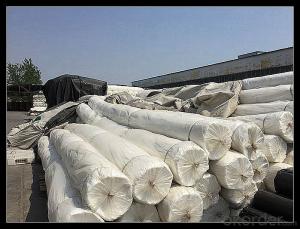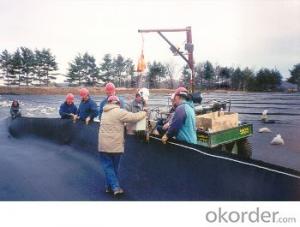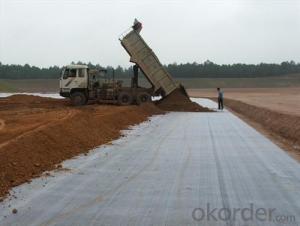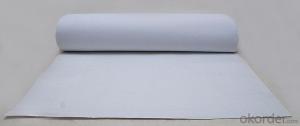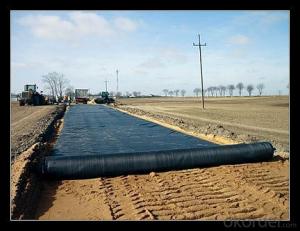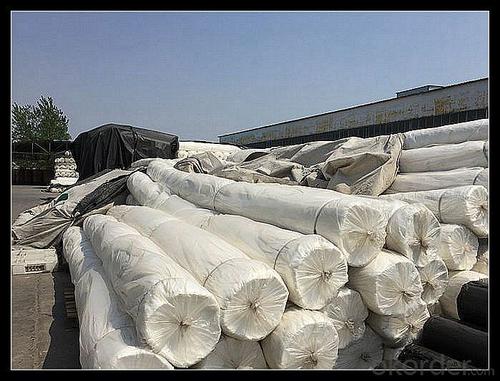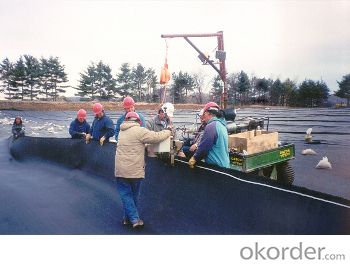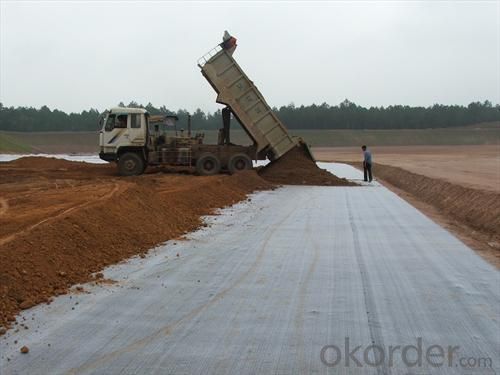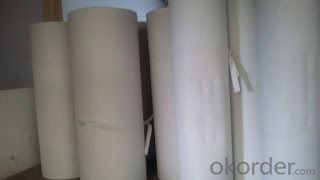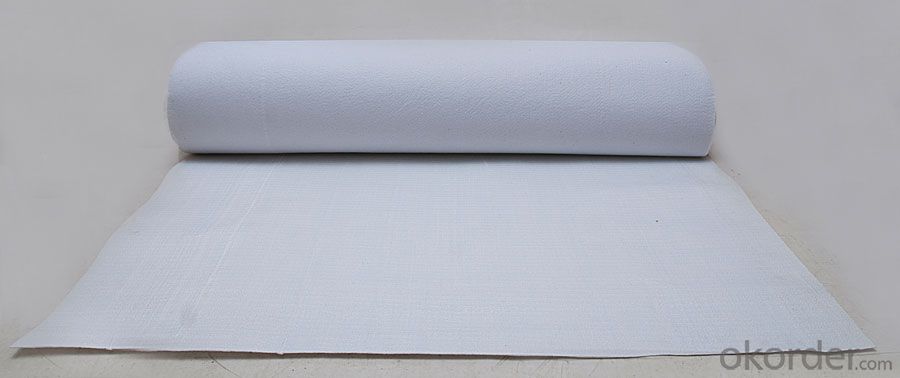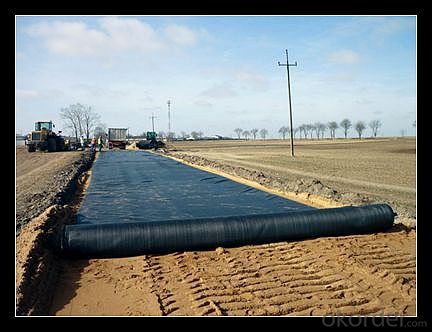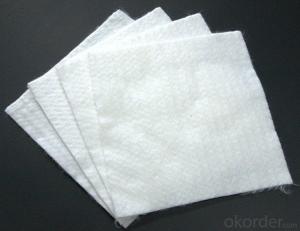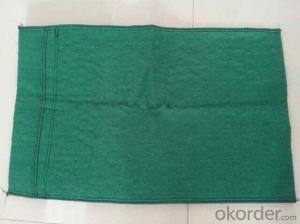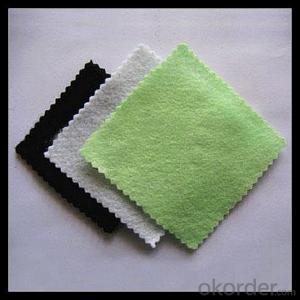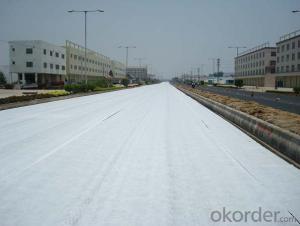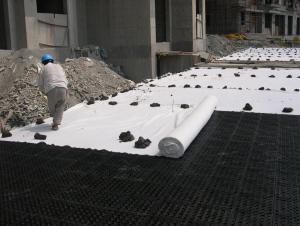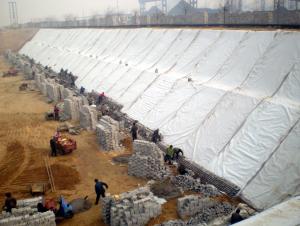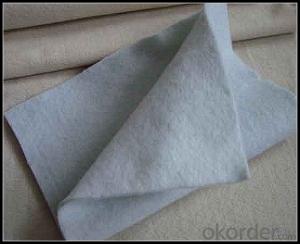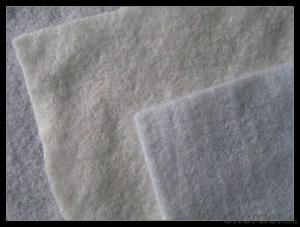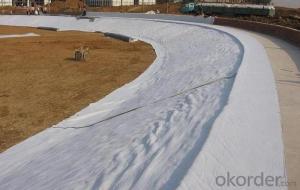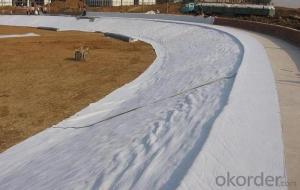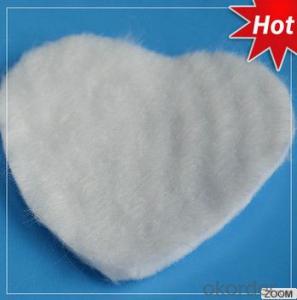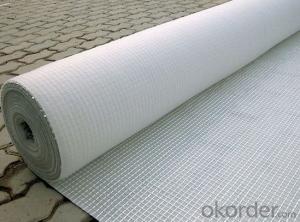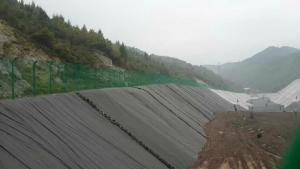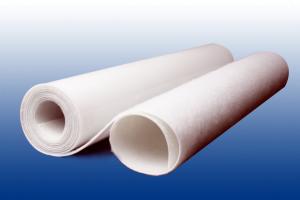Polyester Geotextile - High Stabilization Non-Woven Geotextile PET Non-Woven Fabric
- Loading Port:
- China main port
- Payment Terms:
- TT OR LC
- Min Order Qty:
- 1000 m²
- Supply Capability:
- 1000000 m²/month
OKorder Service Pledge
OKorder Financial Service
You Might Also Like
Specification
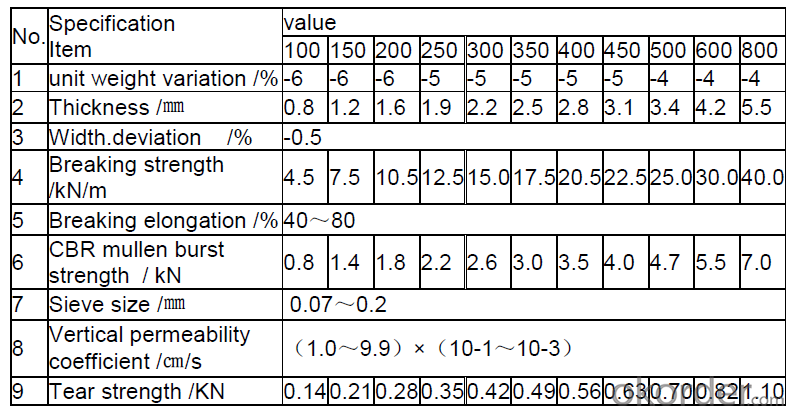
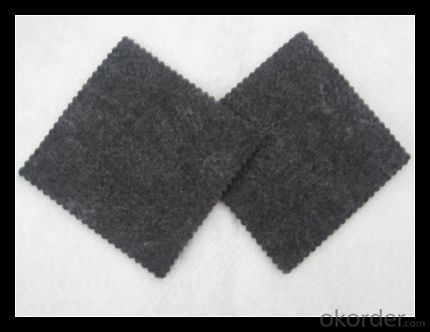
Separation
Woven Geotextile and non woven Geotextiles provide long-term separation of the aggregate
base from the subgrade soil. By separating these two materials, the Geotextile maintains
the original thickness of the roadway aggregate. This is the most important Geotextile
function for roads, particularly where the road is being constructed on weak subgrade
soils.
Filtration and Drainage
Geotextile allows the ground water to pass into the subsurface drain without eroding the
soil and helping the ground from deterioration making the life of the roads very long.
Stabilization
Higher strength PP and polyester woven geotextiles provide strength to the roads thus
making it increment in the effective bearing capacity of low strength sub-grade soils and
increase the life of the roads.
Geotextile-Railways
saimanIn Railway tracks the use of high strength woven geotextiles increases the periods
between track maintenance. They are placed between the existing formation and the ballast
layer to prevent the sub-grade from pumping in to the ballast layer, thereby maintaining
structural integrity.
Our Service
Quality assurance
1.On a regular basis or as per your request,we entrust national testing agencies to conduct quality inspections
2. Strictly in accordance with the ISO9001-2008 international quality system standard,we monitor and manage the whole process throughout production,quality testing,and measurement to ensure product quality
3. For quality-related construction delay or substandard construction(except for damage or losses due to customer’s responsibility or irresistible natural disasters),we have refunding,replacement,and repair services.We will respond to customers’ feedbacks on quality issues within 24 hours.
FAQ:
Q: What kind of payments does jenor support?
A: T/T, L/C, Cash are accepted.
Q: Do you charge for the samples?
A: Accordeing to our company policy, the samples are free, we only charge the freight fee. And we will return the freight fee during the next order.
Q: Can you produce according to customers' design?
A: Sure, we are professional manufacturer, OEM and ODM are both welcome.
Q: Do you have other products?
A: Yes, please check the pictures:
Packaging & Shipping
Packing: PLASTIC FILM INSIDE, AND WOVEN BAG OUTSIDE
Shipping: About 15 days after receipt the deposit
- Q: Is the case, we detect the company now want to engage in expansion (that is, increase the test items), the need for material to do qualification certification. But I have not done before, do not know their own data done unreasonable. Take the data mainly for reference, know the approximate range of the various parameters. Question added: it is best to have data logging source and derivation formula to support the reasonableness of this result, thank you! More
- Hello, can only help you this, do not know useful to you useless factory production geotextile geomembrane drainage board
- Q: What are the advantages of using geotextiles in shoreline stabilization projects?
- Geotextiles offer several advantages in shoreline stabilization projects. Firstly, they provide effective erosion control by stabilizing soil and preventing it from being washed away by waves or currents. This helps maintain the integrity of the shoreline and prevents further erosion. Secondly, geotextiles act as a filter barrier, allowing water to pass through while trapping fine particles and preventing sedimentation. This helps maintain water quality and prevent the buildup of silt or pollutants. Additionally, geotextiles are highly durable and resistant to degradation, making them a cost-effective and long-lasting solution for shoreline stabilization.
- Q: 200g / m2 geotextile how to enter the inspection test
- In accordance with national standards for testing ah
- Q: Are geotextiles resistant to chemical leaching?
- Yes, geotextiles are generally resistant to chemical leaching. They are designed to have low permeability and are made from materials that can withstand exposure to various chemicals without significant degradation or leaching. However, the level of resistance may vary depending on the specific type and quality of geotextile used.
- Q: Can plant roots penetrate geotextiles? Which kind of similar material can keep soil and water and let the plant roots pass through it?
- Of course. The roots of plants are omnipotent, and it has a strong vitality. It is small, but its power is infinite. It is also because it is small, it makes it seamless no omnipotent. It can wear the river across the sea, it can wear stone to break the ground, it is powerful you can not imagine, you do not see the cliffs on the grass, the king did not see the plow of the fern leaves!
- Q: Geotextile mouth chain suture is what kind of picture
- Hello I am a professional geotextile and other geotextile materials,
- Q: Can geotextiles be used in geogrid reinforced retaining walls?
- Yes, geotextiles can be used in geogrid reinforced retaining walls. Geotextiles are often used as a separation layer between the retained soil and the geogrid reinforcement to prevent soil particles from passing through the geogrid openings and to enhance the overall stability and performance of the wall.
- Q: Such as the title, the drawings are written on the weaving geotextile, the list is written on the blended geotextile cloth laying / 120g / m2 weaving geotextile, who can tell ah !!!!!!!!!! Urgent more
- Weaving geotextile cloth, also known as woven geotextile, and non-woven geotextile is not the same, the technical requirements between them are not the same. Light to see the material name sometimes can not determine the material, mainly to see the technical data, if you want to know more about it can add me
- Q: Geotechnical deployment of aging detection of what indicators
- Material anti-aging performance testing, if the reality to consider, for too long, are generally used in the laboratory to accelerate the aging approach to consider. Aging the concept of aging is a big concept. Refers to the material in the external environment under the influence of time changes. Environmental effects are multifaceted, the role of light, the role of temperature, a chemical role, the role of micro-organisms and so on. Now generally referred to as aging, refers to the light aging. Light aging, refers to the material in a certain light exposure after a certain period of time after the performance of the material changes. The most commonly used indicator for photoaging is the strength retention of the material. That is, the ratio of the strength that remains after the light is retained.
- Q: Can geotextiles be used in geosynthetic clay liner caps?
- Yes, geotextiles can be used in geosynthetic clay liner caps. Geotextiles are often used as a protective barrier or separator in geosynthetic clay liner systems to enhance their performance and prevent clogging or migration of fine particles.
Send your message to us
Polyester Geotextile - High Stabilization Non-Woven Geotextile PET Non-Woven Fabric
- Loading Port:
- China main port
- Payment Terms:
- TT OR LC
- Min Order Qty:
- 1000 m²
- Supply Capability:
- 1000000 m²/month
OKorder Service Pledge
OKorder Financial Service
Similar products
Hot products
Hot Searches
Related keywords
